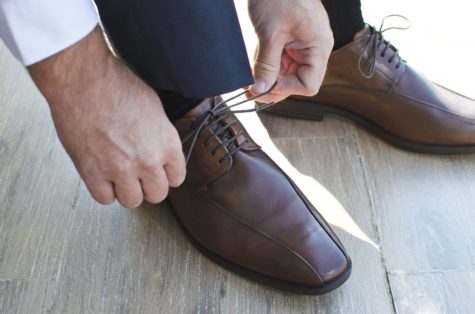BERKELEY, Calif. — The act of tying our shoes is tricky, one minute they’re neatly double-knotted and the next the shoelaces are unraveled and slithering, threatening to trip us. Are you beginning to question whether or not you even know how to tie your shoes?
A recent study from UC Berkeley has finally tugged the strings to the mystery and received results: the combination of whipping the laces and stomping your foot loosens the shoelace knot, causing untangled chaos in a matter of seconds.
In order to better understand knot mechanics, the research team filmed several series of the laces unraveling under different forces in slow-motion. Take these knots seriously: understanding the shoelace bow tie is the first step to understanding the knots of life.

“When you talk about knotted structures, if you can start to understand the shoelace, then you can apply it to other things, like DNA or microstructures, that fail under dynamic forces,” says Christopher Daily-Diamond, study co-author and a graduate student at Berkeley, in a university news release. “This is the first step toward understanding why certain knots are better than others, which no one has really done.”
Study co-author and graduate student Christine Gregg was the first to lace up a pair of shoes and run on a treadmill while the research team filmed her feet. The results were astonishing: your foot strikes the ground at seven times the force of gravity while running. This causes the knot to stretch and then relax, until the next swinging leg comes and applies an inertial force on the ends of the already-loosened laces, which ultimately breaks the knot free (in as few as two strides!).
“To untie my knots, I pull on the free end of a bow tie and it comes undone. The shoelace knot comes untied due to the same sort of motion,” says Gregg. “The forces that cause this are not from a person pulling on the free end, but from the inertial forces of the leg swinging back and forth while the knot is loosened from the shoe repeatedly striking the ground.”
They then tested a variety of different shoelaces, but found that they were still untie the same way. The researchers also applied weights on the free ends of the shoelaces to test their theory that increasing inertial forces would trigger runaway failure of the knot. The knots failed at higher rates.
The research team based their tests on the common way to tie your shoes, the bow tie knot. It is understood that there is a stronger way to tie the bow tie knot while there is also a weaker way.
The stronger knot is known as the square knot: the laces are tied in opposite directions. The weaker one is known as the granny knot: the two laces are crossed in the same direction, resulting in a knot that is twisted instead of flat. Although, both knots failed in the study.

“We are trying to understand knots from a mechanics perspective, such as why you can take two strands and connect them in a certain way that can be very strong, but another way of connecting them is very weak,” says Berkeley Mechanical Engineering Professor Oliver O’Reilly, whose lab conducted the research. “We were able to show that the weak knot will always fail and the strong knot will fail at a certain time scale, but we still do not understand why there’s a fundamental mechanical difference between those two knots.”
Their goal was to understand of the mechanics of how the bow tie knot comes untied under complex forces. Although they found that both the different types of knots as well as the different shoelaces fail the same way, they were interested in how the shoelaces can stay tied for a long time until motion hits.
“You really need both the impulsive force at the base of the knot and you need the pulling forces of the free ends and the loops,” explains Daily-Diamond. “You can’t seem to get knot failure without both.”
A peace of mind to why our shoes are constantly untied and also ground for the future understand of more complex knots like DNA.
The study is published in the journal, Proceedings of the Royal Society A.

Heads Up, taxpayers of California. THIS is what you’re getting for paying exorbitantly high taxes.
A *study* on Shoe Lace Knots. (gee, what would we ever do without studies. /s)
Hi June here I think we’ll it’s because angels try and tell us that life’s thrill it doing stuff accordingly but angels pass us what is wrong or right it helps to know we are guided by angels if you don’t stop thinking about something more than normal angels step in to guide us it saying something with out the action.that get then steamed up.
The problem is that the way I tie my shoelaces had not changed. Physics, obviously, have not changed. Nonetheless, laces that used to stay tied all day now unravel after a few minutes walking. The laces themselves have changed.
Hi my name is June Marie kimpel I have done my own study sort of every time I play lottery my left shoe lace come untied and then we’ll I never win but today both shoe laces came apart now I think the left is bad news and the right is good news but I think angels untie them.